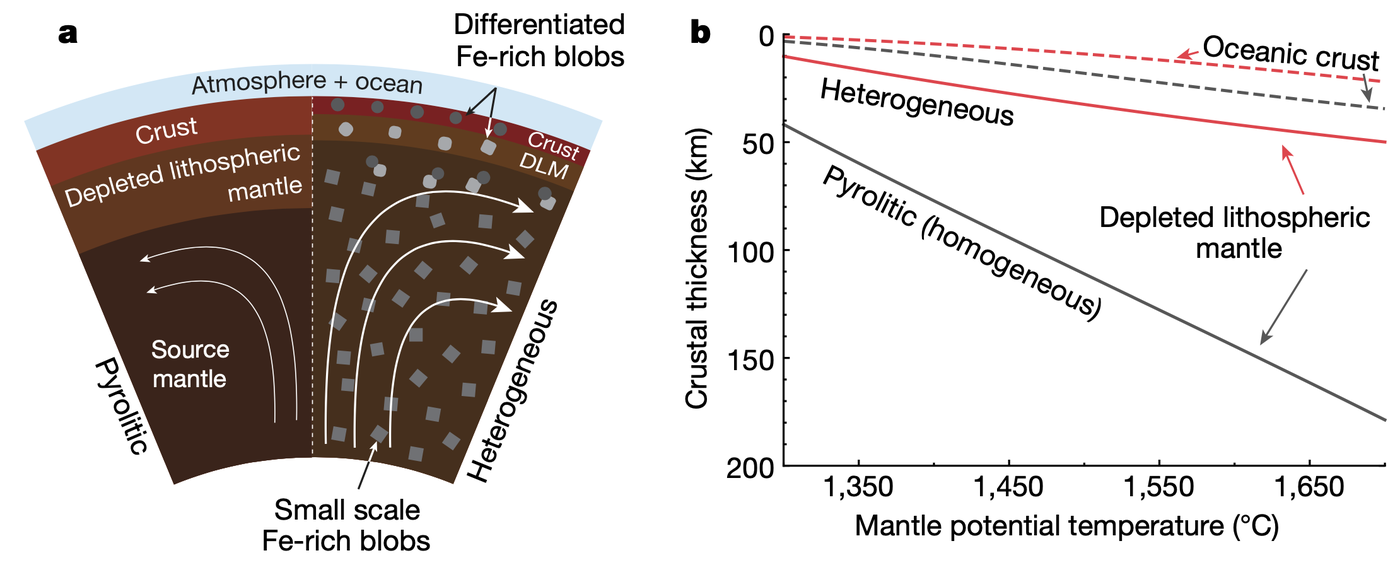Yoshinori Miyazaki
Surface environment during the Hadean (Miyazaki and Korenaga, 2022a, Nature)
One-sentence summary: The atmosphere overlying the magma ocean was extremely rich in CO2, and a wet mantle mostly dominated by high-Mg# materials was the key to rapid sequestration of CO2.
Context: The surface of terrestrial planets is likely to have been molten right after their formation as a result of giant impacts. However, Hadean zircon records, enriched in heavy oxygen, suggest that liquid water was already present at the Earth's surface by ∼4.3 Gya (Wilde et al., 2001). By the end of the Haden, global carbon cycle had likely stabilized the climate and maintained a surface temperature similar to the present-day Earth (Catling & Zahnle, 2020). The early Earth thus experienced a dramatic change in the surface environment, evolving from being uninhabitable to habitable within its first few hundred million years. The key to this rapid transition is believed to be active tectonics during the Hadean.
A hotter mantle is often believed to convect more vigorously, but considering the effect of dehydration stiffening, the presence of a thick depleted lithospheric mantle (DLM) would limit the plate velocity to the same level as the present even at a mantle temperature of 1600 degC (Korenaga, 2011). If so, it would take more than 1.5 Gyr to sequester CO2 released during the magma ocean period. This problem could be mitigated if the mantle was largely composed of High-Mg# pyroxenite, which arises from differentiation during magma ocean solidification. A high-Mg# pyroxenite has a higher melting temperature than pyrolite and would thus develop a thinner DLM compared to an undifferentiated mantle. Plate velocity would reach 50 cm/yr, and even ~200 bar of CO2 could be sequester to the mantle within ∼100 Myr.


